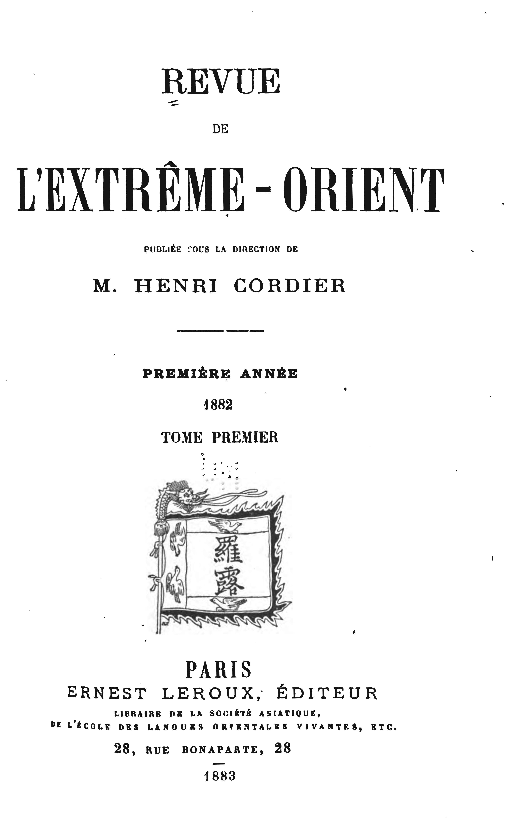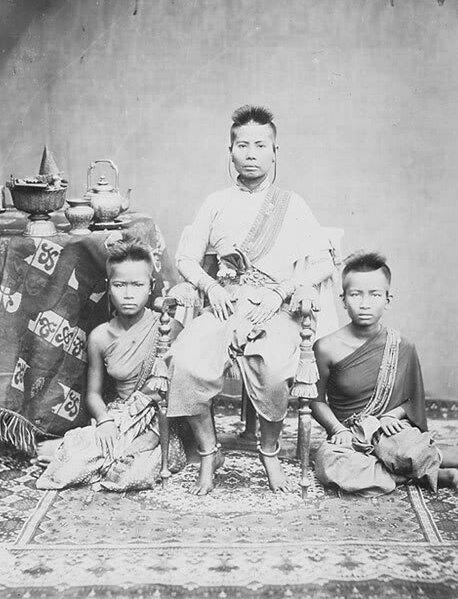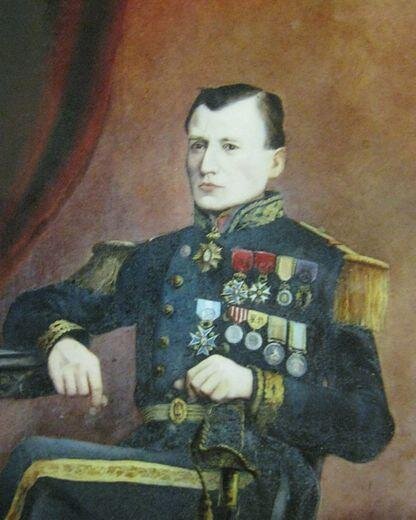De Phnom Penh a Pursat [From Phnom Penh to Pursat]
by Jean Moura
An important account on Cambodia in the early years of the French Protectorate.
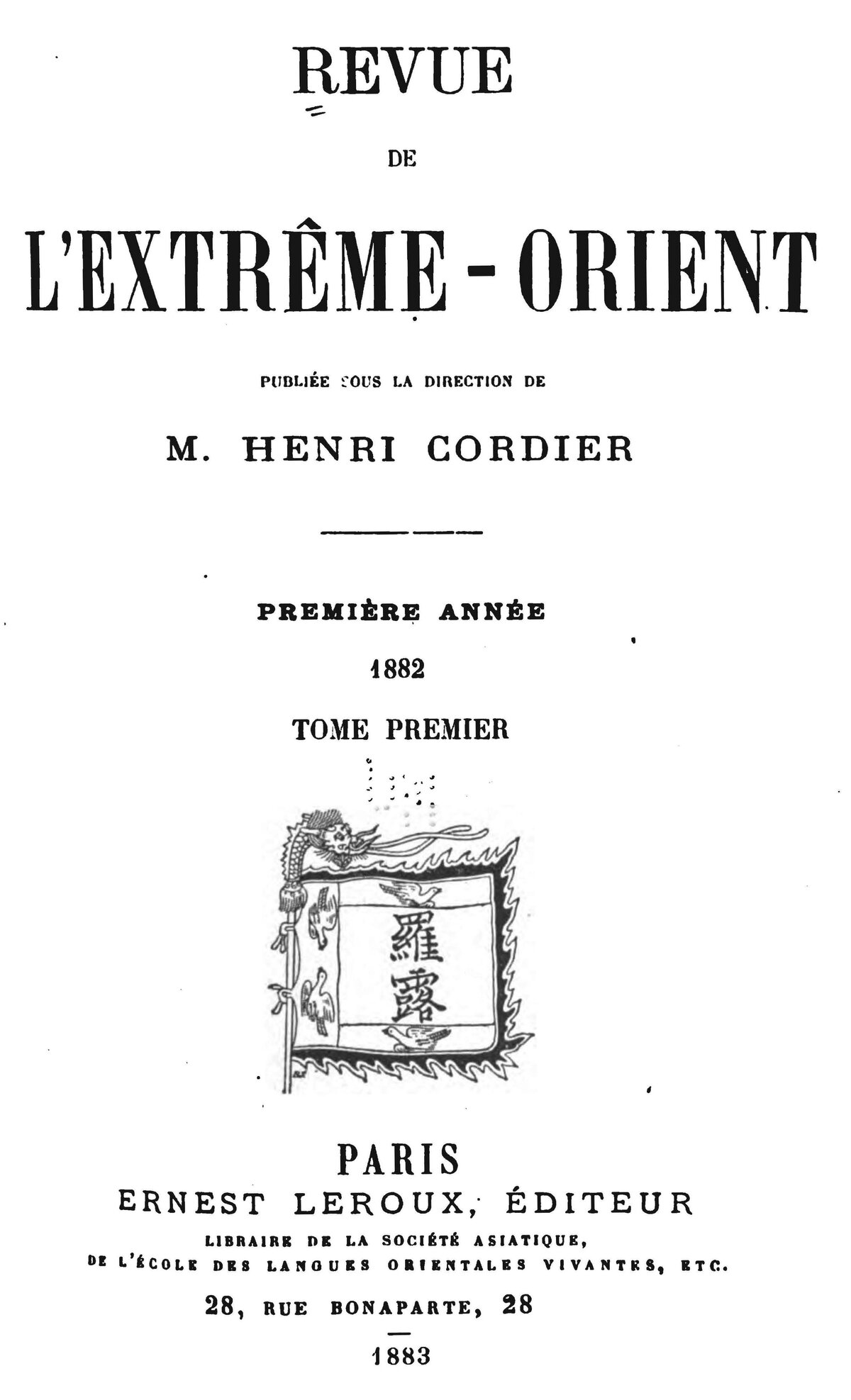
Publication: Revue de l'Extreme-Orient, dir. Henri Cordier, n. 1, 1882.
Published: 1883
Author: Jean Moura
Pages: 93
Language : French
pdf 100.4 MB
This short text by French resident Jean Moura was deemed so significant that it has been translated into Khmer by the Cambodian Minister of Culture and Fine Arts, HE Phoeung Sackona, in 2023.
Of particular relevance for us:
Ang Mey, the Former Queen of Cambodia
“Pour passer le temps, nous résolumes, malgré l’ardeur du soleil, d’aller visiter la Colline du gouvernement, plus généralement connue sous le nom de Colline de Oudong. Je pénétrai d’abord dans une ancienne citadelle adossée au coteau el je né tardai pas à me trouver face à face avec une folle d’une soixantaine d’années environ, mais de fier maintien, ma foi, et de réelle distinction. Elle disparut au loin dès qu’elle eut aperçu un étranger, mais cette brusque apparition me frappa. « Quelle est celle femme? dis-je au mandarin qui nous accompagnait. — C’est, répondit-il, l’ancienne reine Ang Mey, qui gouverna le royaume de 1832 à 1841. Je me souvins, en effet, avoir lu dans les annales du pays qu’en 1832, le gouvernement annamite, apres avoir fait occuper par ses armées le territoire Khmer, et en avoir expulsé tous les prétendants à la couronne, avait fait asseoir sur le trône une princesse cambodgienne toute jeune, qu’il domina el qui souscrivit à toul ce qu’il plut à l’Annam de lui imposer.
“La pauvre folle habitait une maison isolée dans cc fort abandonné, où elle était cependant surveillée et soignée avec un grand dévouement par d’anciennes dames d’honneur et des servantes, qui né la quillaicnt plus depuis qu’elle était dans cet état. D’ailleurs la mère du roi Norodon, qui demeurait tout auprès, veillait avec sollicitude à ce qu’il né manquât rien à sa cousine. Le prestige du rang est si considérable dans ce pays que, malgré la position misérable de cette ancienne reine, les Cambodgiens des environs se prosternaient devant elle, lui témoignaient les mêmes égards que lorsqu’elle était toute-puissante el n’osaient jamais contrarier sa volonté, ses caprices, ses folies, et les détournements de toute nature qu’elle se permettait chaque jour au détriment de ses endurants voisins. […] Je rentrai de cette excursion un peu avant midi; et comme je savais que le roi voulait passer tout le jour auprès de sa mère, je partis vers une heure avec mes éléphants pour Lovec, la capitale du Cambodge avant Oudong, située à six ou huit kilomètres au nord de ce dernier point.” [“To kill time, and despite the heat of the sun, we decided to visit Government Hill, more generally known as Oudong Hill. I first entered an ancient citadel leaning against the hillside and I It wasn’t long before I found myself face to face with a madwoman of about sixty years old, but of proud demeanor, I’d say, and of real distinction. She disappeared into the distance as soon as she saw a stranger, but this sudden apparition struck me. “Who is this woman?” I asked the mandarin who accompanied us. — It is, he replied, the former queen Ang Mey, who governed the kingdom from 1832 to 1841. I remembered, in fact , having read in the annals of the country that in 1832, the Annamite government, after having had its armies occupy the Khmer territory, and having expelled all the pretenders to the crown, had seated on the throne a very young Cambodian princess , which he dominated and who subscribed to everything that Annam pleased to impose on him.
“The poor madwoman lived in an isolated house in this abandoned fort, where she was nevertheless watched and cared for with great devotion by former ladies-in-waiting and servants, who had not left her side since she was in this state. Moreover, the mother of King Norodon, who lived nearby, carefully ensured that her cousin did not miss anything. The prestige of rank is so considerable in this country that, despite the miserable position of this former queen, the Cambodians of the surrounding area prostrated themselves before her, showed her the same respect as when she was all-powerful, and never dared to thwart her will, her whims, her follies, and the diversions of all kinds that she allowed herself every day to the detriment of his hardy neighbors. […] I returned from this excursion a little before noon; and as I knew that the king wanted to spend the whole day with his mother, I left around one o’clock with my elephants for Lovec, the capital of Cambodia before Oudong, located six or eight kilometers north of the latter point.”
ADB Input: Indochina Governor-General Paul Doumer [L’Indochine francaise (Souvenirs), Paris, 1906, p 266] noted: “Lorsque la mort de sa mère [], en 1900 ou 1901, obligea Norodom à prendre le deuil, il voulut que ce soit à la manière des Français revêtus d’uniformes ou même de presque tous les Français d’Indo-Chine à qui le climat impose la toile blanche et né permet pas les vêtements de deuil. Ils portent un brassard de crêpe noir. Il fallait donc au Roi un brassard sur son veston ou sa tunique. Mais le crêpe était vraiment trop peu royal, d’un prix infime. Et le Roi portait le deuil, à la française, avec un brassard en dentelle de Chantilly.”
King Norodom I នរោត្តម, born Ang Voddey អង្គវតី (3 Feb.1834, Angkor Borei – 24 Apr. 1904, Phnom Penh; reigned 19 Oct. 1860 — 24 Apr. 1904) was the eldest son of King Ang Duong and royal favorite Pen Ksatrey (one of Ang Mey’s cousins), and a half-brother of Prince Si Votha and King Sisowath.
Ang Mey អង្គម៉ី (1815 – December 1874, Oudong), was the second daughter of King Ang Chan II (1796−1834), also known by her Vietnamese title Ngọc-Vân-công-chúa (Princess Ngọc Vân) after her accession to the throne in January 1835 [Moura got his dates mixed here]. With the Siamese-Vietnamese War in the background, she reigned from January 1835 to August 1840, when she was deposed by the Vietnamese Emperor Minh Mang, banished to Hue with her sisters in 1841, and reinstated her briefly in 1844 before being moved aside for the coronation of her uncle Ang Duong in October 1846. The fact that Jean Moura saw her alive in this account confirms the fact that his visit took place in the last months of 1872 or in 1873.
Syncretism in Oudong in the 1870s
“Le flanc le plus accessible de la colline à triple sommet de Oudong est celui qui est tourné vers le Nord. Lorsqu’on arrive de ce côté, on contourne d’abod une vaste pièce d’eau circulaire, qui sert d’abreuvoir aux nombreux bestiaux de ce pays d’élevage. A peine engagé dans le chemin qui mène à l’un des sommets, nous passâmes entre deux monuments funéraires ayant la forme de cloches gigantesques. Ces pyramides contiennent les cendres
de plusieurs princes el de plusieurs rois.
“Enfin, sur l’un des sommets s’étale une construction massive, bien délabrée aujourd’hui et qui abrite assez mal une immense idole du Buddha en maçonnerie. Les encadrements des portes et des fenêtres de ce temple abandonné sont en grès sculpté, ainsi que les barreaux des fenêtres; mais on s’aperçoit vite que ces morceaux de sculpture né sortent pas des mêmes mains que la pagode et que l’affreux Buddha qui emplit son sanctuaire: ce sont des spécimens de l’art khmer antique détachés de quelque vieux monument et adaptés gauchement à cette construction sans goùt, sans style, sans caractère et moderne relativement. Un peu plus au sud, on rencontre un pavillon en maçonnerie ayant la forme d’une étable et qui abrite un boeuf en pierre de grandeur naturelle. Le râtelier est constamment pourvu d’herbe renouvelée journellement par les dévots du culle sivaïque, car on sait que le boeuf est un des attributs sous lequel on adore encore Siva dans l’Inde et dans plusieurs autres contrées de l’Asie.
“Le sommet le plus élevé de la colline est couronné par une misérable mosquée servant en même temps d’habitation à un ermite de race malaise, vieux marabout aveugle, qui jouit parmi les mahométans d’une grande réputation de sainteté et qui vit là du produit des quémandes que vont faire dans la plaine quelques disciples plus jeunes, mais tout aussi paresseux et aussi sales que leur maitre. Si de ce point élevé, on tourne ses regards vers l’est, on aperçoit
la chrétienté de Phinhalu, située à quelques milles de là sur les bords du bras du lac.
“Ainsi, sur une étendue de quelques kilomètres carrés, nous voyons quatre temples consacrés à des divinités très différentes, sans compter les petits autels élevés à des divinités secondaires et locales, à des génies bienfaisants ou démoniaques, auxquels les Cambodgiens des campagnes et des forets adressent plus particulièrement leurs prières.” [“The most accessible side of the triple-peaked hill of Oudong is that which faces the North. When you arrive on this side, you first go around a vast circular body of water, which serves as a watering hole for the numerous cattle of this breeding country. Barely embarked on the path which leads to one of the summits, we passed between two funerary monuments in the shape of gigantic bells. These pyramids contain the ashes of several princes and several kings.
“Finally, on one of the summits there is a massive construction, very dilapidated today and which rather poorly shelters an immense masonry idol of the Buddha. The frames of the doors and windows of this abandoned temple are made of sculpted sandstone, as well as the window bars; but we quickly realize that these pieces of sculpture do not come from the same hands as the pagoda and the disgracious Buddha which fills its sanctuary: these are specimens of ancient Khmer art detached from some old monument and clumsily adapted to this tasteless, styleless, characterless and relatively modern construction. A little further south, we come across a masonry pavilion in the shape of a stable and which houses a life-size stone ox. The rack is constantly provided with grass renewed daily by the devotees of the Sivaic cult, because we know that the ox is one of the attributes under which Siva is still worshiped in India and in several other countries of Asia.
“The highest summit of the hill is crowned by a miserable mosque serving at the same time as the habitation of a hermit of the Malay race, an old blind marabout, who enjoys among the Mohammedans a great reputation for holiness and who lives there out of the proceeds of the begging that some younger disciples go to make in the plain, even if they are just as lazy and as dirty as their master. If from this high point, we turn our eyes towards the east, we see the Christianity of Phinhalu, located a few miles away on the banks of the arm of the lake.
“Thus, over an area of a few square kilometers, we see four temples dedicated to very different deities, without counting the small altars erected to secondary and local deities, to beneficent or demonic spirits, to which the Cambodians of the countryside and the forests send their prayers more particularly.”
Cambodian Women
“Ce fut une bonne fortune pour moi que d’être campé ce soir-là près d’un pareil personnage. Dans mon long séjour au Cambodge, je né m’étais jamais trouvé en si bonne position pour observer de près, presque dans l’intimité, les dames de ce pays. Lorsqu’on examine les Cambodgiennes avec attention, on est forcé d’admirer la perfection
des formes, la beauté des yeux et la grâce de l’attitude des toutes jeunes filles; mais lorsqu’elles ont atteint à peine leur vingttième année, leurs muscles se développent outré mesure, leurs traits deviennent communs, elles prennent le plus souvent un embonpoint excessif qui défigure leurs formes et, dès leur premier enfant, elles ressemblent à de grosses mamans.” [“It was my good fortune to be camped that evening near such a person. In my long stay in Cambodia, I had never found myself in such a good position to observe up close, almost in the intimacy, the ladies of this country. When we examine Cambodian women carefully, we are forced to admire perfection shapes, the beauty of the eyes and the grace of the attitude of very young girls; but when they have barely reached their twentieth year, their muscles develop beyond measure, their features become common, they most often become excessively overweight which disfigures their forms and, from their first child, they look like fat matrons.”
ADB Input: Was that not-so-kind notation about Cambodian ladies a way to disguise the author’s inclination for courting local damsels? Fact is Moura had a Cambodian concubine even as he was married with child in France, Neang Teat, who gave him a son on 15 Dec. 1874, Moura Dam, who came to work for the French colonial administration but who has never recognized by his father [source: Gregor Muller, Colonial Cambodia’s ‘Bad Frenchmen’, op. cit., p 218.]
Spanish, Portuguese and Filipino Connections
“Vers le soir, au moment de notre diner, la musique royale joua quelques morceaux d’harmonie, des marches, des pas redoublés et cette délicieuse valse que les Espagnols désignent sous le nom de Habanéra, et qui me rappelait le voyage si agréable que le roi Norodon et moi nous avions fait aux Philippines peu de temps auparavant. [That visit to the Philippines took place in August 1872, so Moura’s timetable is quite puzzling as he writes ‘peu de temps auparavant’, ‘a little while ago. Elsewhere in his account, he notes that ‘Oudong has been abandoned by the kings seventeen years ago’, meaning that he wrote these lines around 1880, shortly after he left Cambodia for France.] […] Deux autres étrangers, le portugais Béloso et l’espagnol Gonzalès, prirent également faveur à la cour du nouveau roi, qui contrevint même aux usages en faisant épouser à l’un d’eux une princesse. Plus tard, Béloso fut député par le roi khmer aux iles Philippines pour demander au gouvernement espagnol de cette colonie des secours contre un de ses parents révolté. Il obtint cent soldats qui se rendirent au Cambodge sous la conduite d’un dominicain! L’année suivante, ce fut Gonzalès qui alla porter à Manille la nouvelle que le roi du Cambodge, vaincu par les Siamois, s’était enfui au Laos, et que les Européens, amis du roi, étaient au pouvoir de l’ennemi, sauf quelques-uns qui étaient parvenus à s’échapper.
“Il y eut à cette époque d’autres interventions du gouvernement des Philippines dans les affaires du Cambodge. Le prestige des Européens grandissait avec les services rendus au pays por leur gouvernement. Mais, en 1596, les Chinois, jaloux de l’influence politique ct de l’ascendant que prenaient à la cour les Espagnols, qui commençaient aussi à être des concurrents redoutables sur les marchés, leur suscitèrent des embarras et des luttes sanglantes s’ensuivirent, dans lesquelles les Chinois, soutenus par les Malais et les Chams, finirent par l’emporter et par contraindre les Espagnols à s’embarquer pour les Philippines.
“Gonzalès et Béloso né s’éloignèrent pas. Ils se retirerent au Laos et revinrent en 1599, traînant à leur suite un des fils de Prea Barom Réachéa, forcé, comme eux, de fuir au Laos, et ils le firent roi du Cambodge. Pour les services rendus dans ce coup de main, le jeune roi donna le gouvernement de la province de Baphnom à un Portugais, Don Diégo, et il mit à la tete de la province de Trang- l’Espagnol Blas Castilla. Ce fut dans les premières années du XVIeme siècle que les Portugais, chassés de Sumatra par les Hollandais, se retirèrent en grand nombre au Cambodge.”
[“Towards the evening, at the time of our dinner, the royal music played some pieces of harmony, marches, doubled steps and that delicious waltz which the Spaniards call ‘Habanéra’, and which to me recalled the pleasant trip that King Norodon and I had made to the Philippines not long before. [That visit to the Philippines took place in August 1872, so Moura’s timetable is quite puzzling as he writes ‘peu de temps avant’, ‘a little while ago. Elsewhere in his account, he notes that ‘Oudong has been abandoned by the kings seventeen years ago’, meaning that he wrote these lines around 1880, shortly after he left Cambodia for France.] […] Two other foreigners, the Portuguese Béloso and the Spaniard Gonzales also took favor at the court of the new king, who even contravened custom by making one of them marry a princess. Later, Béloso was delegated by the Khmer king to the Philippine Islands to ask the Spanish government of this colony for help against one of his rebellious relatives. He obtained one hundred soldiers who went to Cambodia under the leadership of a Dominican! The following year, it was Gonzales who went to Manila to bring the news that the king of Cambodia, defeated by the Siamese, had fled to Laos, and that the Europeans, friends of the king, were in the power of the enemy, except a few who managed to escape.
“At this time there were other interventions by the government of the Philippines in the affairs of Cambodia. The prestige of the Europeans grew with the services rendered to the country by their government. But, in 1596, the Chinese, jealous of the political influence ct the ascendancy that the Spaniards were gaining at court, who were also beginning to be formidable competitors on the markets, caused them embarrassment, and bloody struggles ensued, in which the Chinese, supported by the Malays and the Chams, ended up winning and forcing the Spaniards to embark for the Philippines.
“Gonzalès and Béloso did not move away. They retired to Laos and returned in 1599, dragging with them one of the sons of Prea Barom Réachéa, forced, like them, to flee to Laos, and they made him king of Cambodia. For the services rendered in this coup de main, the young king gave the government of the province of Baphnom to a Portuguese, Don Diégo, and he put the Spaniard Blas Castilla at the head of the province of Trang. It was in the early years of the 16th century that the Portuguese, driven out of Sumatra by the Dutch, retreated in large numbers to Cambodia.”
Tags: Phnom Penh Royal Palace, Queens & Kings of Cambodia, 1880s, French Protectorate, Modern Cambodia, Oudong, King Norodom I, Queen Ang Mey, Portuguese in Southeast Asia, Filipino, Spanish conquerors, 1870s, Saivism, Islam, Christianism, Theravada Buddhism, The Philippines, Philippines
About the Author
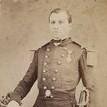
Jean Moura
Jean Moura (3 Apr 1827, Moissac, France — 17 May 1885) was a French Navy officer, civil administrator, Khmerologist and explorer who authored one of the first exhaustive descriptions of Cambodia and Angkor, Le Royaume du Cambodge (1883).
While lieutenant de vaisseau (Lt.) Moura was thrice the ‘Representative of the French Protectorate’ in Cambodia (from 20 Feb.1868 to 10 March 1870, from 1st Jan. 1871 to 1st May 1876, and from 9 Nov. 1876 to 6 Jan. 1879), he developed a great interest in the geography, archaeology and history of the country.
Back in France from 1879, he donated to the Musée de Toulouse numerous pieces he had collected in Cambodia, in particular from the Neolithic site of Somrongsen (Kompong Chhnang Province, southeast of the Tonle Sap), discovered in 1875 by F. Roque, later studied by French archeologist H. Mansuy, and which it had visited in 1876.
In April 2022, Cambodian Minister of Culture and Fine Arts HE Phoeurng Sackona ភឿង សកុណា published her translation into Khmer of Moura’s diary, De Phnom-Penh à Pursat en compagnie du Roi de Cambodge et de sa cour, relating a journey across Cambodian provinces and around the Tonle Sap Lake on elephants hosted by King Norodom Ier, in which Moura had been the only foreigner invited.
According to Gregor Muller’s Colonial Cambodia’s Bad Frenchmen: The Rise of French Rule and the life of Thomas Caraman 1840 – 1887 (Routledge, 2013; French translation by Bénédicte de Cheyron Monroe, Le Cambodge Colonial et ses “mauvais Francais”, L’Harmattan, Paris, 2015. ISBN 0−415−35562−1), Jean Moura fathered at least one child with a Cambodian woman, Neang Teat, Moura Dam, who came to work as interpetrer and cartographer in Cambodia, but never claimed fatherhood.
A portrait displayed during the conference “L’aventure de l’officier de marine moissagais Jean Moura au pays de la grande civilisation Khmer” by René Pautal, Moissac, France, Oct. 2010 (Photo La Depeche du Midi)

